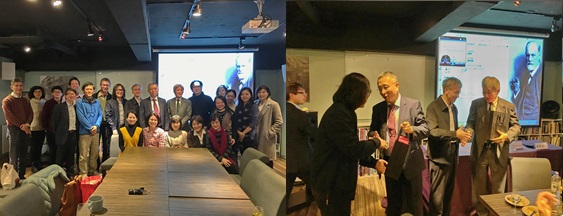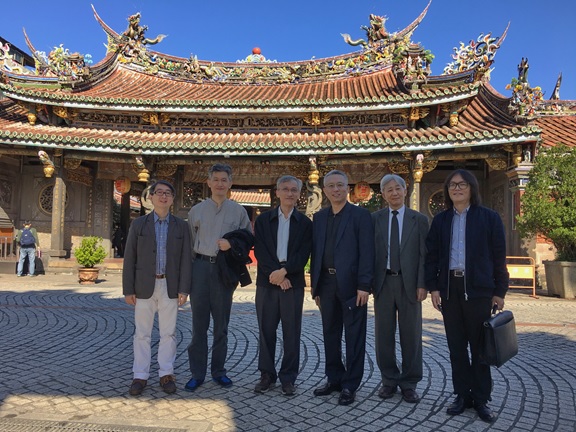JANUARY 2017
TAIWAN PSYCHOANALYTIC ASSOCIATION
Psychoanalysts would agree that cultural and historical experience is deeply embedded in the human psyche. People spent some of their life time living in a war zone perceive things and formulate thoughts differently than people who have lived their life in a relatively peaceful society. When they have the opportunity to exchange stories, feelings, and opinions, they fascinate each other, and human experience hereby obtains a chance of enrichment. Taiwan is, currently, a place like this.
No more than a few decades ago, it was hard to find “Taiwan” in the world atlas. One self-comforting perspective for us was that Taiwan is geographically small in size. It is an island in East Asia lying between Philippines and Japan, separated from mainland China by the Taiwan Strait. Does the size really matter? People would agree that this factor is only influential to a certain degree. The struggle of seeing and being seen with a complete sense of identity has played a pivotal role.
It is a curious fact that Taiwan had a long history of colonization. In the past four-hundred-year modern history, there have been different ruling powers, including the Dutch, the Chinese (Ming loyalists followed by Qing dynasty), the Spanish, the Japanese (1895-1945), and again the Chinese (the Nationalist government) after the end of World War II. Since the lifting of the martial law in 1987, Taiwan has been striving steadily for democracy. Meanwhile, many aspects of societal development have emerged, including psychoanalysis.
The intellectuals of Taiwan have been attracted by psychoanalysis since the 1960s, a time when many translation works of psychoanalytic classics as well as contemporary theories was beginning to flourish. They included many of Freud’s most famous writings and works of other theorists, such as Jung and Adler. The translators were mostly medical students or young psychiatrists. Since this early flourishing era, pioneering psychiatrists who initiated the study of psychoanalytic ideas have kept applying them to their clinical works in the name of psychodynamic psychiatry. Subsequently, a growing number of people have been devoted to all kinds of psychotherapies in response to the increasing need in the Taiwan society. Simultaneously, the interest in applied psychoanalysis has also developed steadily in academic circles. However, there has long existed a sharp contrast between people’s devotion to psychoanalysis and the lack of a formal psychoanalytic training program.
Taiwan Psychoanalytic Association (Study Group and Allied Center), or TPA, was initially named as Taiwan Center for the Development of Psychoanalysis (TCDP). It was founded in November 2004 and became an IPA Allied Center in 2006. We currently have one hundred and ten members, composed of psychiatrists, psychologists, nurses, and others.
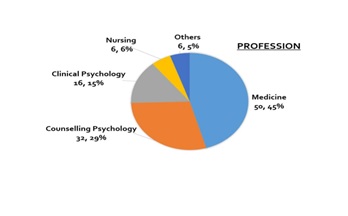
In this past decade, we have organized many psychoanalytic events, both locally and internationally. Internationally, our leading members have made use of their diverse connections to invite psychoanalysts from different countries. Our guest speakers usually gave 6‐10 lectures or clinical seminars in a week. They are Chris Mawson, Jane Peringer, Maria Teresa Hooke, David Bell, Vic Sedlak, Rudi Vermote, David Millar, Claire Cripwell, Irma Brenman Pick, Penelope Garvey, Jacque Andre, Catherine Chabert, Dennis Duncan, Jocelyne Malosto, David Taylor, Caroline Garland, Michael Rustin. Margaret Rustin, Bernard Favarel‐Garrigues, Louise Emanuel, Laurence Kahl, Gilberte Gensel, Robin Anderson, Mary Target, Nicola Abel‐Hirsch, Trudy Klauber, Biddy Youell, Jean‐Claude Lavie, Gilberte Gensel, Maggie Mills, Daniel Widlöcher, Hélène Trivouss‐Widlöcher, Michael Gundle, Erik Gann, Nina Schorr, Michael Parsons, Teresa Yuan, Ann De Lancy, David Sachs, and many others. A good number of them have become our long-term professional friends.
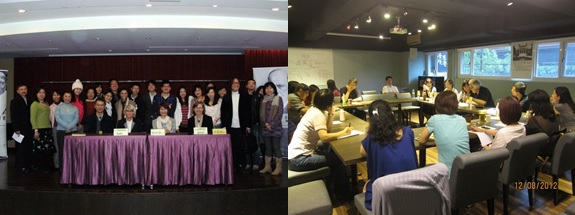
Events held by TPA have been warmly welcomed, and our endeavor has inspired younger generations to learn more about psychoanalysis. With a lot of hard work and serious collaboration, we were formally approved by the IPA as a Study Group in 2015. Accordingly, our group has undergone a structural reform and has been renamed as Taiwan Psychoanalytic Association (Study Group and Allied Center).
In order to grasp a sense of the very recent, actively ongoing, structure reforming process, a term “Formosa Model” (Liu, 2010) has to be elaborated. Roughly four hundred years ago, the Portugal sailors first saw Taiwan and exclaimed, “Ilha Formosa,” which means “beautiful island.” Since then, Taiwan has been known as Formosa. This island is densely mountainous with plenty of forests and a variety of plants and animals. Going from geographical and ecological view to the human and societal compositions, Taiwan is also characterized by a high level of diversity in terms of people, language, culture, and, politics. The blending of the cultures of the aborigines, Taiwanese, Hakka, mainland Chinese, and most recently the new immigrants from Southeast Asia has created glamorous cultural and societal scenery.
Although we have conceived of the Formosa Model as the signpost of our psychoanalytic journey, it was not something planned in advance. Instead, the Formosa Model is a natural outcome of many years’ experiences. As if we are reflecting the highly diverse scenario in many areas in Taiwan, people interested in psychoanalysis have also been diverse in many aspects. It is from the lively interactions both within the group and between the visiting international psychoanalysts and us that the Formosa Model emerged. The central idea is to acknowledge and cherish the reality of our diversity and to try the best to make room for each member in respect of his or her relationship to psychoanalysis. Phenomenologically, it is similar to the fact that all different plants and animals are allowed to flourish in the highly varied environment of Taiwan. The basic tenet is mutual respect and tolerance. It may give us best chance to move ahead in harmony.
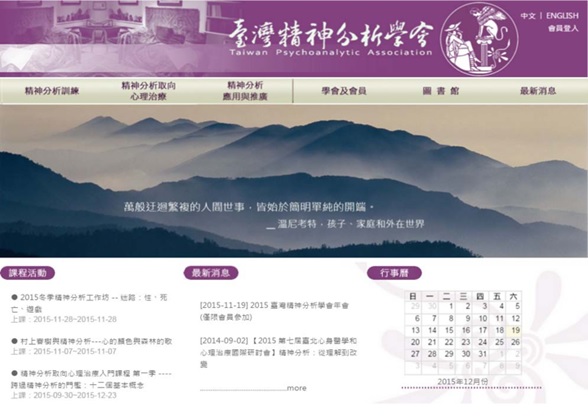
The Formosa Model is substantiated in the current structure of the Taiwan Psychoanalytic Association. To IPA, it represents both a Study Group and an Allied Center, while internally it includes three Divisions--Psychoanalysis, Psychoanalytic Psychotherapy, and Applied Psychoanalysis (or Outreach). We believe the balanced and parallel development of the three areas not only best reflects our historical origins but also proves a most enriching and mutually beneficial community for the future. Currently in the Psychoanalysis Division, the Study Group members work actively with each other and with IPA sponsoring committee, Dr. Michael Gundle and Dr. Rudi Vermote, to establish a local psychoanalytic training program. In the Psychoanalytic Psychotherapy Division, 2-year training programs, which teach mental health professionals weekly, are provided in three major cities in Taiwan. As per the Outreach Division, in addition to continue having Western psychoanalysts’ visiting works and local workshops, TPA has initiated to make connections with groups in Asia. For instance, in our annual meeting in December 2016, Dr. Do-Un Jeong from Korea and Dr. Kunihiro Matsuki from Japan visited Taiwan and shared the history and model of their psychoanalytic developments. It is exciting to learn experience from our neighbors—we recognize detailed differences in the context of a higher level of homogeneous quality. Perhaps, the increase of collaborating with other Asian colleagues is quite essential for our future development.
